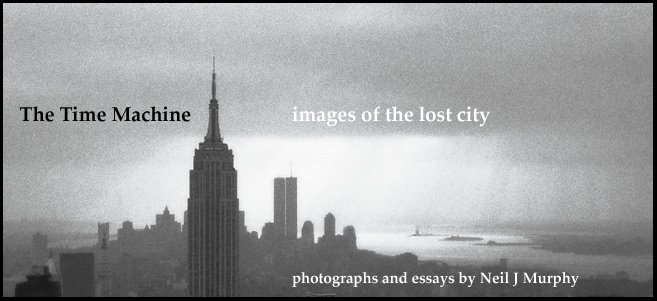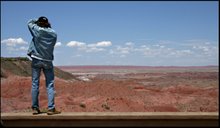 July 1988
July 1988
 June 2007
June 2007
It all comes back to 42nd Street, it seems. No matter which neighborhood we talk of in this changing city, the poster child of New York transformation remains one of the thoroughfares that make up the fabled crossroads of America.
We have two views this week, the first ones show us the Deuce at just about its nadir early on an overcast summer morning. David Dinkins was mayor, crack was king, and New York was on its way to a then-record 2,244 murders. (The record of 2,605 was set two years later.)
The New Amsterdam theater figures prominently in both pictures; by 1988 this original home of the Ziegfeld Follies had been abandoned for six years, and would fester for another five before being taken over by the city and state, then restored, at a cost of over $34 million, by Disney. Next to it, the building housing the Roxy theater would be replaced twice: in 1997 by a Disney store that served as an exit from the New Amsterdam (typical Disney marketing: leave the theater through the retail store) and finally by the Ernst and Young skyscraper in 2000. And while Kung Fu movies are hard to come by in Times Square these days, somewhere there's a steak vulcanizing at Tad’s.
People lament the 'Disneyfication' of 42nd street, but that term is misleading. Disney works its magic at 4/5th of life size: that's the scale that every single Main Street USA structure is built to. Disney does its best stuff working from the ground up. Times Square is more of a Potemkin village: fresh facades on century-old office blocks alongside the brand-new and easily-altered structures of steel and glass.
Of course, the street itself is another giveaway: Main Street USA never has to deal with any kind of real vehicular traffic upon its surface, nor does it act as part of the roof of one of the worlds largest subway stations, either. Times Square has not been Disneyfied. Especially not with all that litter in the street.
So all of the billions of dollars sunk into these blocks, private and public money alike, seem to have produced little more than overdone cosmetics. A recent Sunday morning finds as forlorn a scene as witnessed two decades before, now the gaudy neon pierces the softness of the early light like a lipstick smear on a chorus girl, the street litter scattered like mascara flakes on her cheeks.
I love the vanishing point perspective of the pictures on the left, and I especially like the shirt hanging from the lamp post in the top one. Note the lamp posts as they march in a line down the vanishing point in both pictures, broken in the newer shot with a new mid-block traffic signal. Prominent in the hazy black-and-white background you can see the McGraw-Hill building and the east tower of the Manhattan Plaza apartments. New apartment towers have joined the Plaza today, and the Madam Tussard's sign obscures the green deco tower.
And because I love vanishing point pictures, here's another relevant one, from October of 1988:

 June 2007
June 2007




1 comment:
Lileks today (9.12.07) does a
then-and-now on the Amsterdam.
A mere few weeks after I email him a link to your site, thinking he'd be interested.
Hm. Guess he *was* interested....
Post a Comment